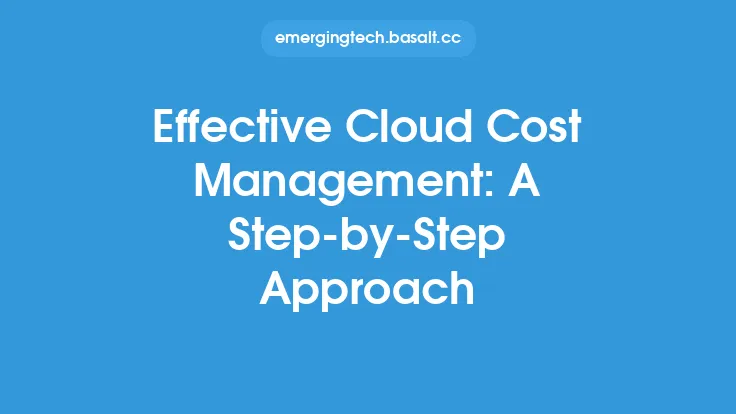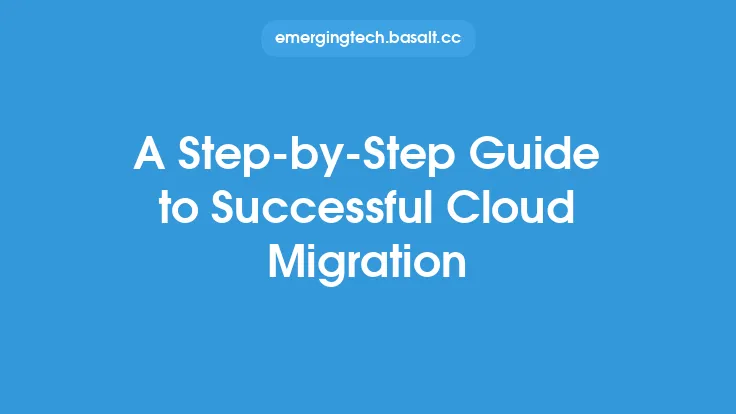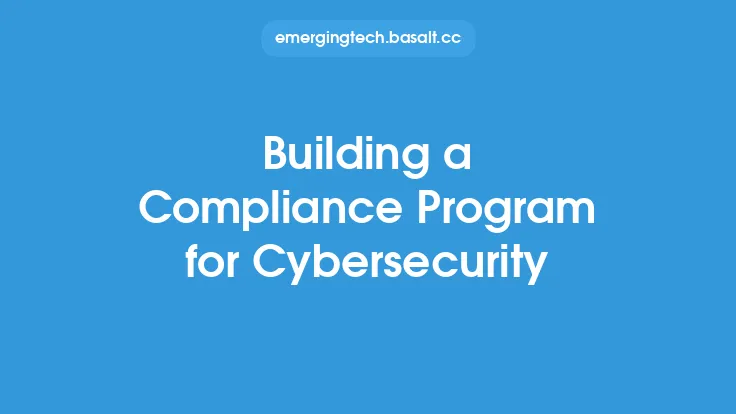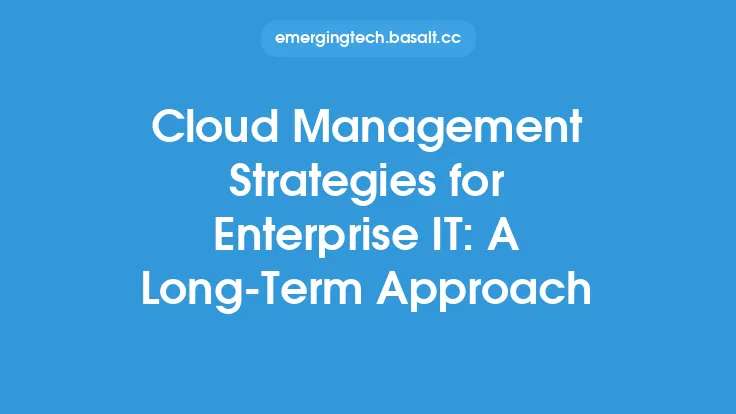Building a cloud compliance program is a critical task for organizations that want to ensure the security, integrity, and availability of their data and applications in the cloud. With the increasing adoption of cloud computing, regulatory requirements and industry standards have become more stringent, making it essential for organizations to establish a robust compliance program. In this article, we will provide a step-by-step approach to building a cloud compliance program, focusing on the key components, best practices, and technical requirements.
Introduction to Cloud Compliance
Cloud compliance refers to the process of ensuring that an organization's cloud-based infrastructure, applications, and data meet the required regulatory, industry, and internal standards. Cloud compliance involves a range of activities, including risk assessment, control implementation, monitoring, and reporting. The goal of a cloud compliance program is to minimize the risk of non-compliance, protect sensitive data, and maintain the trust of customers, partners, and stakeholders.
Step 1: Define Compliance Requirements
The first step in building a cloud compliance program is to define the compliance requirements that apply to your organization. This involves identifying the relevant laws, regulations, industry standards, and internal policies that govern your cloud-based operations. Some of the key compliance requirements include data protection, privacy, security, and availability. Organizations must also consider the geographical location of their cloud infrastructure and the applicable laws and regulations in those regions.
Step 2: Conduct a Risk Assessment
A risk assessment is a critical component of a cloud compliance program. It involves identifying the potential risks and threats to your cloud-based infrastructure, applications, and data. The risk assessment should consider factors such as data breaches, unauthorized access, denial of service, and data loss. Organizations must also assess the likelihood and impact of each risk and prioritize them accordingly.
Step 3: Implement Controls and Countermeasures
Once the compliance requirements and risks have been identified, organizations must implement controls and countermeasures to mitigate those risks. This may include implementing security measures such as firewalls, intrusion detection systems, and encryption. Organizations must also implement access controls, including authentication, authorization, and accounting (AAA) mechanisms. Additionally, organizations should implement incident response and disaster recovery plans to ensure business continuity in the event of a security incident or disaster.
Step 4: Monitor and Audit Compliance
Monitoring and auditing compliance is an ongoing process that involves regularly reviewing and assessing the effectiveness of your cloud compliance program. This includes monitoring system logs, network traffic, and user activity to detect potential security incidents. Organizations must also conduct regular audits to ensure compliance with regulatory requirements and industry standards. The audits should include reviews of security controls, access controls, and incident response plans.
Step 5: Establish Governance and Accountability
Establishing governance and accountability is critical to the success of a cloud compliance program. This involves defining roles and responsibilities, establishing policies and procedures, and ensuring that all stakeholders are aware of their obligations. Organizations must also establish a compliance team that is responsible for overseeing the compliance program and ensuring that all compliance requirements are met.
Technical Requirements for Cloud Compliance
From a technical perspective, cloud compliance requires a range of controls and countermeasures to be implemented. Some of the key technical requirements include:
- Encryption: Encrypting data both in transit and at rest to protect it from unauthorized access.
- Access controls: Implementing access controls, including AAA mechanisms, to ensure that only authorized users have access to cloud-based resources.
- Network security: Implementing network security measures, including firewalls and intrusion detection systems, to protect against unauthorized access and malicious activity.
- Incident response: Establishing incident response plans to ensure business continuity in the event of a security incident or disaster.
- Logging and monitoring: Implementing logging and monitoring mechanisms to detect potential security incidents and ensure compliance with regulatory requirements.
Best Practices for Cloud Compliance
Some best practices for cloud compliance include:
- Implementing a cloud security framework: Implementing a cloud security framework, such as the NIST Cybersecurity Framework, to provide a structured approach to cloud security and compliance.
- Conducting regular risk assessments: Conducting regular risk assessments to identify potential risks and threats to cloud-based infrastructure, applications, and data.
- Implementing continuous monitoring: Implementing continuous monitoring to detect potential security incidents and ensure compliance with regulatory requirements.
- Establishing a compliance team: Establishing a compliance team that is responsible for overseeing the compliance program and ensuring that all compliance requirements are met.
- Providing training and awareness: Providing training and awareness programs to ensure that all stakeholders are aware of their obligations and the importance of cloud compliance.
Conclusion
Building a cloud compliance program is a critical task for organizations that want to ensure the security, integrity, and availability of their data and applications in the cloud. By following the step-by-step approach outlined in this article, organizations can establish a robust compliance program that meets regulatory requirements and industry standards. Remember to define compliance requirements, conduct a risk assessment, implement controls and countermeasures, monitor and audit compliance, and establish governance and accountability. Additionally, consider the technical requirements and best practices outlined in this article to ensure the success of your cloud compliance program.





